8+ Sample Employee Corrective Action Plan
-
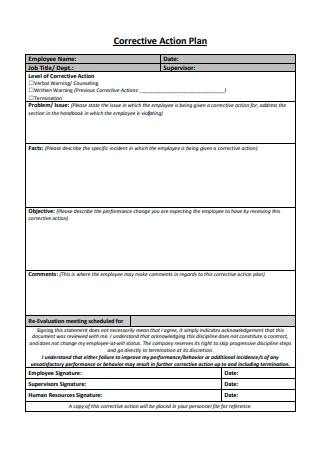
Employee Corrective Action Plan
download now -
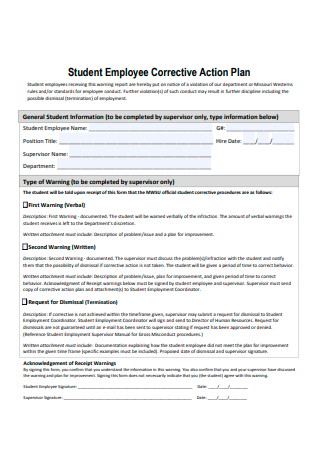
Student Employee Corrective Action Plan
download now -
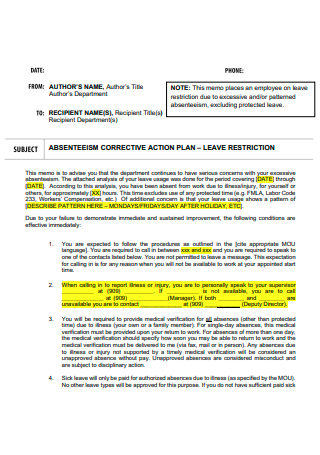
Employee Absenteeism Corrective Action Plan
download now -
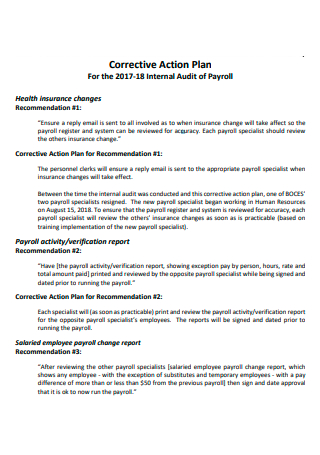
Employee Corrective Action Plan Example
download now -
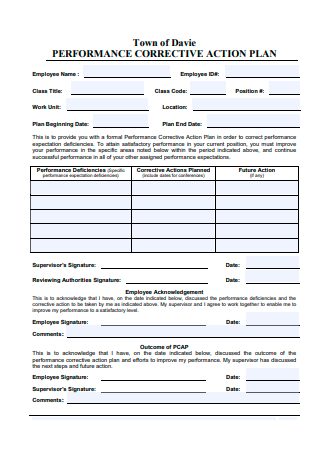
Employee Performance Corrective Action Plan
download now -
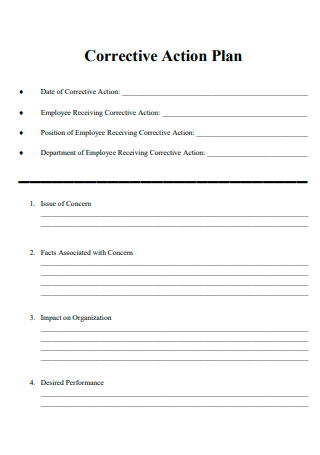
Sample Employee Corrective Action Plan
download now -
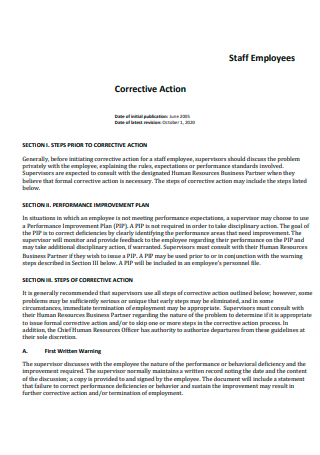
Staff Employee Corrective Action Plan
download now -
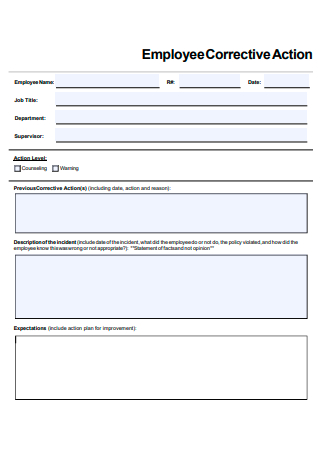
Basic Employee Corrective Action Plan
download now -
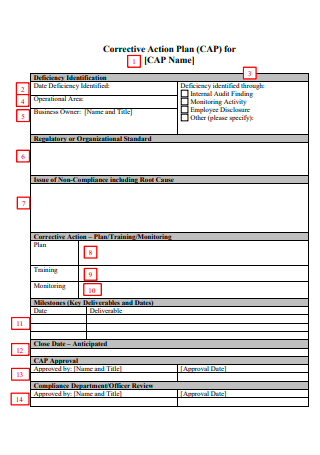
Employee Corrective Action Plan in PDF
download now
FREE Employee Corrective Action Plan s to Download
8+ Sample Employee Corrective Action Plan
What is an Employee Corrective Action Plan?
What is the Importance of Corrective Action?
Common Employee Performance Problems
How to Implement an Employee Corrective Action Plan
FAQs
What is the difference between corrective actions and performance improvement plans?
What does nonconformity mean?
What is the difference between corrective action and preventive action?
But sometimes, the employees can exert too much effort in trying to give their best for the company that they forget to take care of themselves. This in turn leads to very small problems such as lack of concentration and motivation to do the task and it will eventually snowball into huge problems such as performance issues in the workplace and them getting into trouble, which can lead to a business’ downturn in performance. Such issues concerning the employees in the company will necessitate an appropriate employee corrective action plan in order to get them back on track.
What is an Employee Corrective Action Plan?
An employee corrective action plan is a business document that describes how a specific situation (such as employee performance issues or behavior issues) of a particular employee will be altered or modified in order to better satisfy the company’s needs. In other words, this action plan serves as a way of communicating with the employee to improve his/her behavior or performance after methods such as performance appraisal and coaching have not been successful. The basic goal of an employee corrective action plan is to not punish the employee but to guide him/her toward a performance improvement or conduct improvement by identifying the problems, causes, and solutions.
An employee corrective action plan should be implemented in a progressive manner, starting from the least severe action and working the way up towards more severe actions.
What is the Importance of Corrective Action?
Whenever there is an incident that drastically alters the way a business runs its things and makes them deviate from its routines resulting in a downward performance trend, corrective action is needed. There are several different reasons why companies can benefit whenever they take corrective action against any untoward events in the workplace. Here are some of them:
Common Employee Performance Problems
Dealing with performance problems can be a daunting task for company managers and employers. With that being said, here are some of the most common employee performance problems that are found in the workplace:
How to Implement an Employee Corrective Action Plan
Here are the necessary steps to be taken in order to implement an effective employee corrective action plan:
1. Examine the employee’s issue.
The first step of developing a corrective action plan for an employee is to examine his/her underlying issues first. To do this, investigate, identify, and verify the root cause of an employee’s issues. Is it a personal issue? Is it purely down to stress? Even if the cause of an employee’s issue is fairly obvious, it is still important to thoroughly investigate every possible angle with vigilance because once you identify the cause, the direction for the next steps and solutions can then be presented. When the core issue is identified, the process of creating the corrective action plan gets a whole lot easier.
2. Discuss with the employee and identify corrective actions.
Once you’ve figured out what is causing the problem, talk to your employee, and if necessary, the appropriate authorities about all the possible solutions. The next step is to weigh each of the benefits and drawbacks of each action and choose the best one to pursue. Additionally, it is also important to apply the necessary risk management protocols, establish responsibilities at various stages of the employee corrective action plan, and if the plan is completely drafted, set an adequate amount of time to test it.
3. Develop the employee corrective action plan.
Once the best and most appropriate corrective actions for the employee to take have been identified, it is now time to develop the details of the action plan. Keep in mind that in developing this action plan that it should be structured clearly and properly. The elements that can be included in the corrective action plan include the specific problem being addressed, the solution to be taken for improving, the list of tasks that should be undertaken to successfully implement the plan, the timeline of the action plan, and the employee’s responsibilities in carrying out the corrective action plan.
4. Train the employee or employees about the corrective action plan.
If training involves only a single employee, this step may only take hours. If multiple employees are involved, the training may take days to complete. Regardless, for the training to be effective, it should be laying out the process from the start of the training to its end so that the employee or employees will gain the skills, knowledge, and understanding that is needed to effectively carry out the tasks that are listed in the corrective action plan.
5. Implement the employee corrective action plan.
This step should be implemented immediately after the training process so that the gap between training and actual use of skills and knowledge is lessened. But before this step begins, make sure in the created document that everything necessary is completely written. This covers all the instructions, methods, and procedures that are in place in order to carry out the plan. Also, make sure that all the employees concerned can readily access the action plan if they need it.
6. Examine the results and adjust the plan accordingly.
In this step, examine the results of the created corrective action plan for the employees. You can ask yourself if the plan worked accordingly, if the issue was completely resolved, or if the results could have been better. Try to get as full a sense of the underlying problem as possible. When the answers slowly emerge one by one, actions are then taken to fine-tune the process of corrective action and improve it. An effective employee corrective action plan should detect and resolve any nonconformities from the employee.
FAQs
What is the difference between corrective actions and performance improvement plans?
Corrective actions are necessary for workplace policy violations. It is most useful whenever an employee is deemed to have violated a specific company policy. Examples of violations can include attendance issues or negligence of safety protocols. Performance improvement plans are used whenever the need for addressing poor employee performance and workplace behavior issues arises. This is usually used whenever an employee’s behavior cannot be pinpointed to a specific policy violation or if multiple policies are being violated. While performance improvement plans share the same elements with corrective actions, they differ also because the PIP requires a much more detailed path to progress.
What does nonconformity mean?
The term nonconformity is defined as a “non-fulfillment of a requirement” by the ISO DIS 45001. In simpler terms, it refers to the failure to meet an intended state and specification. Sources of nonconformities include poor communication, poor documentation, poor training of personnel, poor motivation of personnel, poor quality of tools and equipment, and a dysfunctional working or operating environment. Nonconformity also occurs whenever there is a breach of health and safety protocols inside a workplace.
What is the difference between corrective action and preventive action?
Corrective action is considered as a reactive way of addressing any nonconformities and is used to correct a nonconformance that has already happened in the workplace. Preventive action is considered as a proactive method of addressing any nonconformities and its main aim is to keep a non-conformance from happening in the workplace. These two actions share the same aim of addressing any non-conformance in the workplace.
Taking corrective action for employees after a minor or major incident has occurred in the workplace is an employee’s legal and moral responsibility for their employees and the customers that they serve. Understanding why an employee underperforms or frequently experiences performance problems in the workplace is also a key factor in developing an employee corrective action plan in order to properly address the problems. In this article, there are examples posted for you to download and personally use as a reference if you will ever need one for your workplace in the future.
